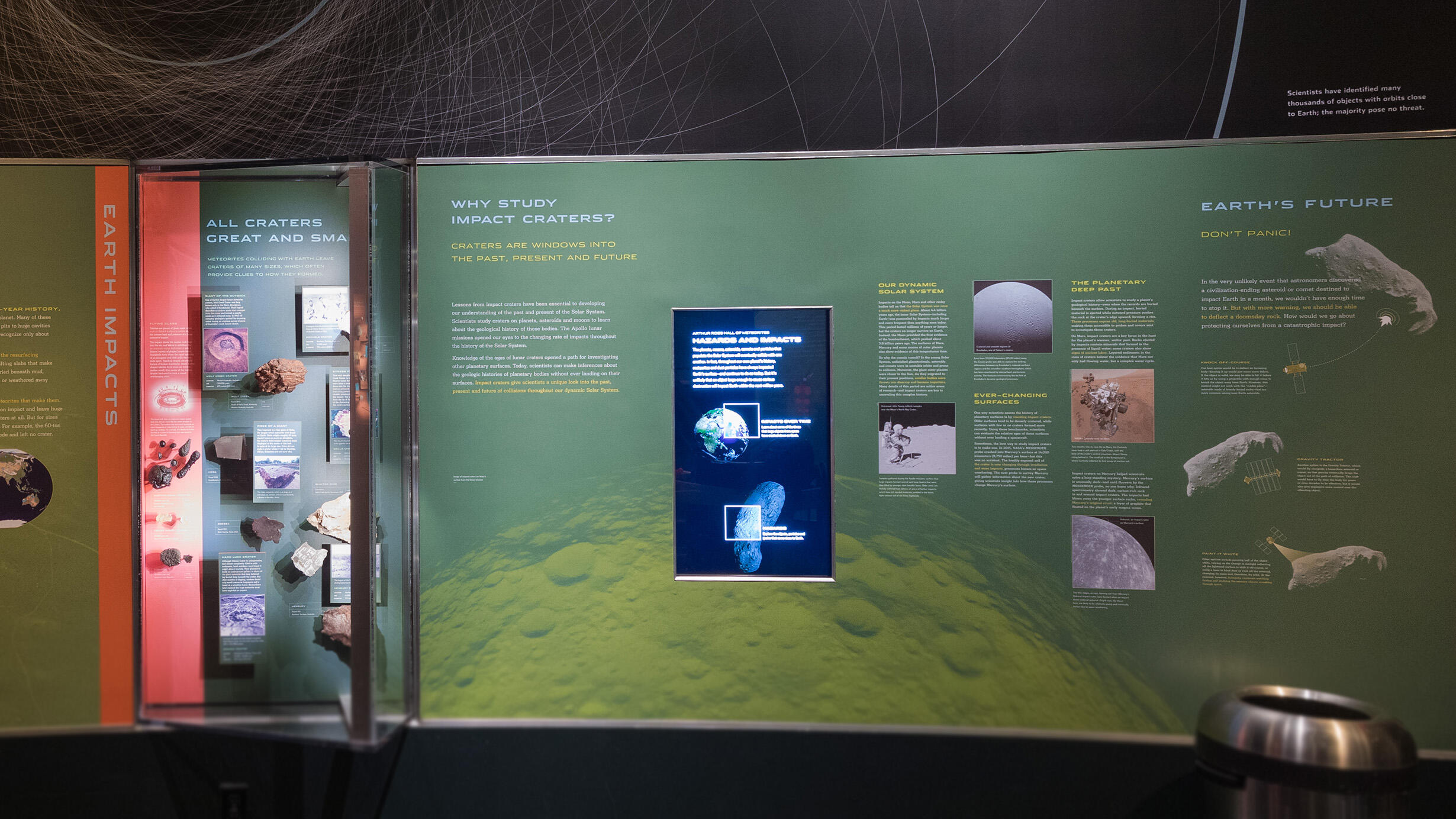Earth Impacts
Part of Hall of Meteorites.
 C. Chesek/©AMNH
C. Chesek/©AMNH Many of these impacts initially left behind craters, ranging from small pits to huge cavities dozens of miles across. Yet so far, people have found only about 200 meteorite impact craters.
Most of Earth's craters have been erased by the resurfacing processes of tectonic plates, the massive slabs that make up Earth's crust. Other craters have been buried beneath mud, lava or blowing sand, hidden beneath oceans or weathered away by wind and water.
Craters come in many sizes, just like the meteorites that make them. The largest objects that hit Earth explode upon impact and leave huge craters, while the smallest ones leave no craters at all. But for sizes in between, the results are harder to predict. For example, the 60-ton iron mass called Hoba did not explode and left no crater.
Earth's known impact craters
©AMNH
During Earth's 4.5 billion year history, countless meteorites have crashed onto the planet.